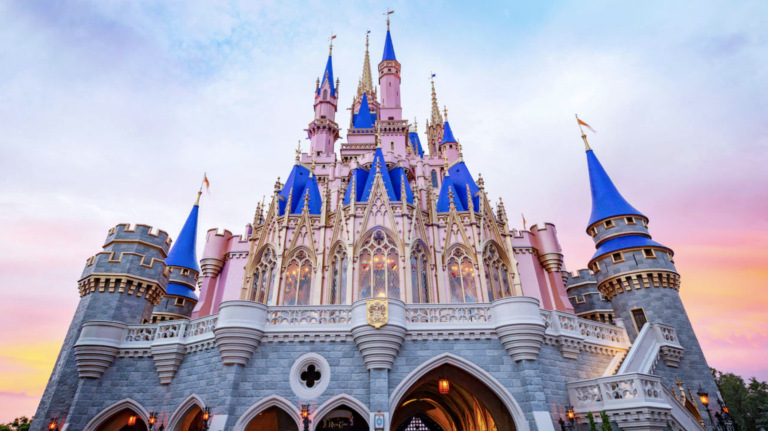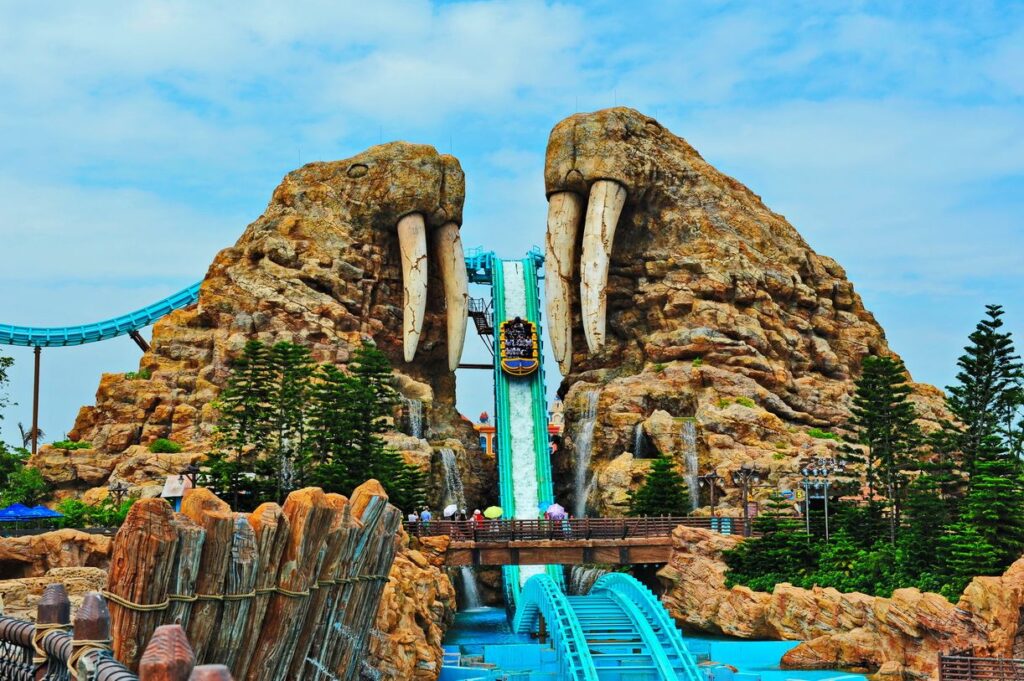3. Parks powered by locals propel ahead

Though the artificial boost of “pent-up pandemic demand” may be softening and yielding flat or faltering attendance for destination parks, the other side of that coin is also true: parks that don’t rely on national and international tourism are seeing stable – and even increasing – attendance. That makes sense, doesn’t it? Disneyland, for example, has remained steady in its growth.
That’s also true at Disney California Adventure. After a lackluster 2022 convinced us that the park’s recent practice of low-cost, quickly-installed, “cheap and cheerful” IP infusion was a bust, the park saw attendance rebound by 10% in 2023. The park is still painfully close to the attendance it was drawing in 2012 – over a decade earlier – which explains why the 2024 D23 Expo saw several incredibly high profile projects announced for the park, including an Avatar themed land (with an E-Ticket boat ride), two new rides for Avengers Campus (including an E-Ticket dark ride), and a Coco themed boat ride. None of it will be ready until 2028 or so, but at least Disney is recognizing that these local-powered parks are stable bets that resist the churn and sway of the larger tourism industry.
Similarly, who would’ve ever imagined that Universal Studios Hollywood – cynically, a “real, working movie studio” that just so happens to have some rides – would be biting at the heels of Universal Studios Florida? But it’s true. A 9.3% attendance drop in Florida coincides with a 15% gain in California, bringing the two studio parks within 100,000 visitors of each other. Of course, that’s on the back of the February 2023 opening of Super Nintendo World… but it might make Universal wish they’d added Super Nintendo World to Universal Studios Florida rather than breaking it off for a whole new park…
4. The Castle Park shuffle continues

Pre-pandemic, the three “big” Castle Parks had a long-cemented and seemingly unchangeable order: Magic Kingdom at number one, Tokyo Disneyland at two, and then Disneyland at number three. That changed with the pandemic, opening a gap for Disneyland to not just bypass its Japanese sister, but to inch perilously close to dethroning Magic Kingdom as the number one most-visited park on Earth.
Magic Kingdom’s reported increase of 3.4% bests Disneyland’s of 2.2%, widening the gap just a hair… but Tokyo Disneyland’s rebound certainly restores it to the running.
Meanwhile, Shanghai Disneyland reports the largest increase of any Disney Park – up an astounding 164% from the year prior. To be fair, that’s because 2022 was a pretty awful year for Disney’s first mainland China park, which continued to face substantial closures due to China’s “zero COVID” policy. That policy ended in January 2023, giving the Shanghai park a massive return to form, proving that the divisive Asian park is certainly here to stay.
Hong Kong Disneyland also reported a very nice post-pandemic bump of 88%, but the resulting total – 6.4 million – positions it at number 17 on the global charts, just below Disney’s Animal Kingdom. Given that that park had the new World of Frozen open in November 2023, the park will likely report a boost in 2024.
That leaves just one remaining Castle Park to discuss – Disneyland Paris. The beleaguered European park ranks just between Hollywood Studios and EPCOT with a healthy 10.4 million visitors. That’s the best attendance Disneyland Paris has reported since 2012, which is a very nice sign, especially since the park hasn’t opened a genuinely new major attraction since… well… 1995.
5. Chinese parks enter the conversation

It’s well known that China is an “emerging market” for entertainment. A rapid coalescing of post-industrial work has produced a growing “middle class” who – like Americans did in the 1950s – are finding themselves with a precious new commodities: leisure time, and money to spend. It just so happens that this hungry new market also coincides with the country’s ruling party taking what we might call a “cautiously permissive” stance on American influence – a real rarity in a country that vastly limits outside media.
Given that China’s population is about four times as large as the United States’, you can understand why media companies have tripped over themselves (and occasionally, looked the other way regarding high profile human rights and political issues) for the opportunity to introduce a staggering new billion-dollar market to their characters and products. It’s no accident that Shanghai Disneyland and Universal Studios Beijing have opened in the last decade, for example.
But the fact that the country’s Chimelong Ocean Kingdom has officially entered the top six theme parks globally means that we won’t be able to simply ignore Chinese parks for long. Indeed, several new or rising entries in AECOM’s estimation are parks most readers here have probably only heard of in passing and never expect to actually visit themselves. Make no mistake, though: we look poised to see a lot of Chinese parks and properties enter this list over the next decade, and writing them off as “Chinese knock-offs” or glorified Asian amusement parks isn’t going to be a strategy that ages well…
6. “Underlying metrics” win the day

Though 2023’s numbers present a “mixed bag,” one thing is certain: the industry is healthier than ever by way of “underlying metrics.” Specifically, even parks that report declines in attendance typically pair it with trumpeting increases in per capita spending – in other words, fewer guests, but more revenue associated with each one. That shouldn’t be a surprise. The post-pandemic era of the industry is one defined by the upcharge.
Disney’s short-lived former CEO, Bob Chapek, said the quiet part out loud, describing Disney’s annual passholder base presenting an “unfavorable mix” of guests and – even more – proclaimed that Disney’s strategy was for its parks to cater to a smaller number of guests, but who were willing to spend more. Even if returned CEO Bob Iger doesn’t make the same gaffe out loud, there’s no question that he and Parks Chairman Josh D’Amaro share the M.O.
Because not only have the costs of Disney Parks admission risen dramatically over the last few decades – now, visitors have to purchase per-person, per-day add-ons to recreate the formerly-included experience. Add that to increases in food, parking, souvenirs and – particularly at Disney Parks – a suite of slashed perks and new upcharges and you can see why Wall Street hasn’t lost much sleep over attendance declines. And more than likely, neither have operators. Hell, Disney might prefer if you stay home… unless you’re willing to pay.


